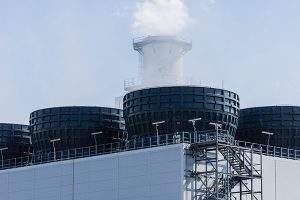Bloomberg
Germany says it can’t rely on gas supplies from Russia this winter as Europe faces a crunch point in its energy crisis, with Nord Stream flows disrupted by maintenance this week and more works expected next month.
Germany’s Economy Minister Robert Habeck is becoming increasingly pessimistic about the role of Russia’s Gazprom PJSC in supplying the vital fuel during the coldest months. The company has stopped deliveries to Europe through its main pipeline for what it said would be three days, and there are growing expectations in Europe that these flows will be used as a way to squeeze the bloc on sanctions.
The government in Berlin is already bracing for continued disruption from more maintenance on Nord Stream in mid-October, according to people familiar with the administration’s thinking. That halt might be even longer than the current one, one of the people said.
Habeck and German Chancellor Olaf Scholz have accused the Kremlin of exploiting Europe’s dependence on Russian energy as a weapon to retaliate against sanctions imposed after it invaded Ukraine.
During the summer when demand is low, Europe has been filling its gas storage facilities and is now about two months ahead of schedule, countering the risk that Moscow could keep shipments at minimal.
Germany announced that it will charter an additional floating terminal for importing liquefied natural gas beyond the four it is already installing to try to replace flows from Russia.
Floating terminals are faster and cheaper to install than land-based projects. Germany aims to start at least two such facilities already this heating season, with the others planned for the following winter. Uniper SE and RWE AG will help supply the first two terminals.
Germany is leading Europe’s efforts to install LNG import terminals, but such plants are also planned in the Baltics, Italy and France. Two new Dutch LNG terminals are slated to start importing LNG this month, easing Europe’s concerns as Russia is slashing pipeline-gas deliveries.
Germany’s fifth floating terminal will be in Wilhelmshaven with a capacity of at least 5 billion cubic meters per year and is scheduled to go into operation in the fourth quarter of 2023.
Together, the floating terminals alone could cover around a third of gas demand by end of 2023, the German government said.
 The Gulf Time Newspaper One of the finest business newspapers in the UAE brought to you by our professional writers and editors.
The Gulf Time Newspaper One of the finest business newspapers in the UAE brought to you by our professional writers and editors.
